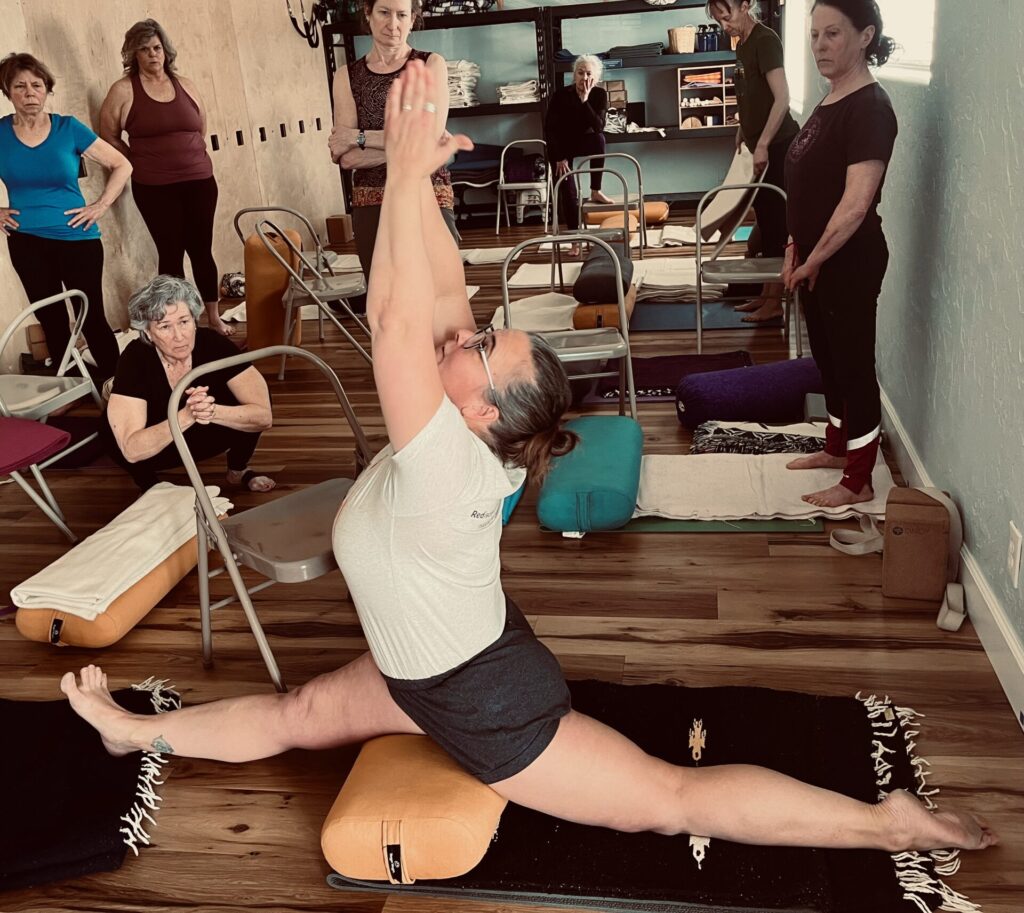The Presence in the Present

What does it mean to “be present”? In yoga and meditation circles, this is a refrain used so commonly, yet it is one of the most difficult things to “do”. And, I put “do” in quotes for a reason as it seems the present moment is not the place to be “doing” anything. It is an experience, a presence, to absorb.
As I travel for sabbatical, visiting friends and family far and near, I am reminded that the past is important. It has built us into who we are and drives our views and thinking. The future is also important, as it gives us direction and purpose. But neither are the actual truth to what is – right now – actual experience.
Yoga-asana practiced in the methodology of Iyengar Yoga can teach us what it means to “be present”. However, when we are in physical action it can be a difficult task. Often, as students, we wish for what we used to be able to do in the past at a younger age or at a different time. Or, we have expectation of what we should be able to do in the future – a “goal” of a pose or action. “The present” is there, always presenting itself in the posture, but instead of absorbing the experience, we lose it in thoughts of past or future.
Recently practicing and preparing to teach Hanumanasana, a pose named for the monkey god who symbolizes pure devotion to the Divine, I am reminded that the strength of this pose (but any pose really) is in its embodiment of “the presence in the present”. Physically in the splits of Hanumanasana, we have one foot forward (future) and one foot back (past). But the real beauty (and ultimately the most difficult part) of the posture is found in lifting up from the center (present) into the back arch that opens our heart, the yogic “seat” of the Divine.
In my experience, the “present moment” has this actual presence to it – what we might call “the Divine”, “pure consciousness”, “spiritual freedom”. Without one foot stuck in the past and one foot striving for the future, we discover the stable, quiet, clear present. We can try to grasp it, hold onto it, or even recreate it, but the thing about the “present moment” is that it is actually always changing. It is our practice to be aware of it and stay with it as it flows – the movement of moments. This is the very reason yoga exists as a practice – to “still the fluctuations of consciousness” (The Yoga Sutras of Patanjali – Sutra I.2)
Vipassana Meditation for me, is another tool for discovering what “the present” means, and I look forward to my next 10-day course coming up in May. Without any distraction, on a 10-day meditation course, we are asked to watch and to learn the patterns of thought that drive us back toward the past or forward into the future to create disturbance or reaction – positive or negative – in the mind and the body. Sitting in the moment and watching what comes and goes without any impetus to change is the practice.
Even in my recent addition of playing the Djembe drum, I’ve discovered another outward expression of this “presence in the present”. Since a rhythm is drummed out on the instrument from the direction of the mind, if any other thought comes in, the rhythm is lost. The beauty and solace of the consistent, present, beat is broken and must be started again. And, a divine presence is felt in the union of drums in a beat unbroken.
So back to the question of what it truly means to “be present”. Asana, Vipassana, and drumming may be practices I have found that bring me closer to the inward experience of the “presence in the present”. So, how about you?